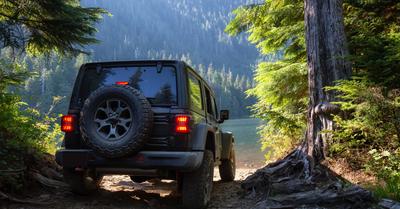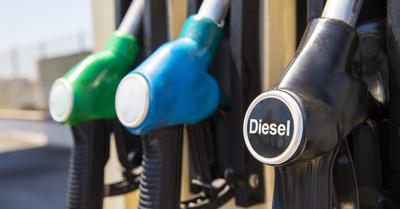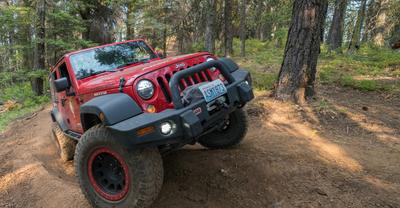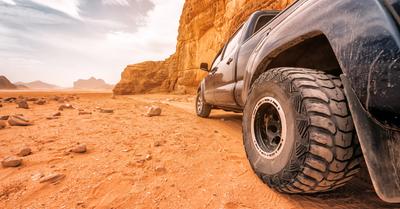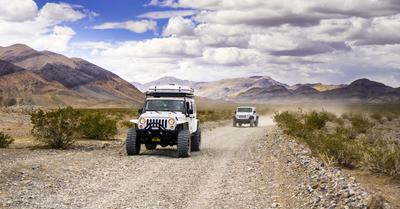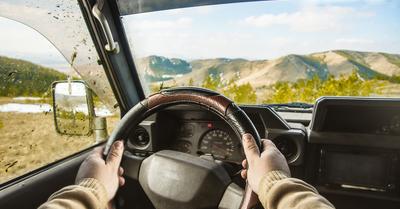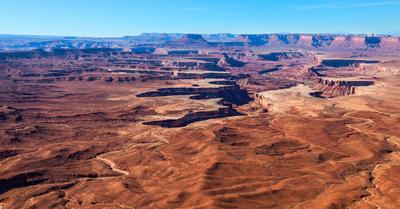Will 33" on stock suspension allow you to off-road? What impact do larger tires have on handling and efficiency? Let’s find out
Jeep JK can be equipped with 33” tires, but there won't be adequate clearance for full off-road articulation. There are some options that must be considered, backspacing, clearance, fuel efficiency, handling, and other factors, before going out and installing wider tires to your JK.
Are you interested in a professional opinion on whether 33-inch tires can be mounted on a stock Jeep JK? I have extensive knowledge about tire size and compatibility from working on Jeeps and other off-road vehicles for years. I've personally put 33-inch tires on an original Jeep JK, so I understand what it takes to make it function properly. I'm eager to impart my experience to you and guide you as you choose what will work best for your Jeep JK. Let's explore if 33-inch tires are the best option for your stock Jeep JK.
Key Takeaways
- On a basic Jeep JK, 33-inch tires may be mounted.
- For sufficient clearance, modifications to the suspension and chassis are required.
- Performance and fuel economy may be impacted by switching to bigger tires.
- For your particular demands, pick the proper lift package and wheel spacers.
This article may contain affiliate links where we earn a commission from qualifying purchases.
Can You Put 33 Inch Tires On A Stock Jeep JK
The wheel fenders and Stock JK design provide a decent lot of front clearance. Nothing is touched as the automobile drives through the city. The back tires on a stock are never an issue because there is more than sufficient room in addition to not being forced to turn in any certain way.
Installing slightly wider tire aftermarket new wheels can increase backspacing, particularly if they have a marginally negative offset. As there won't be enough clearance and there will be rubbing intensifies at complete lock, especially while off-roading, fit wider tires on a stock shouldn't be put on OEM new rims.
Whenever you want to drive off-road, you'll have to make a few additional changes to the car creating the 33-inch function correctly since they are just a little bit too wide for the overall articulation (flex) on a factory suspension without anyone rubbing. 33 inch tires may be used with a factory stock suspension upgrade setup if you're only upgrading to huge tires for looks and the sporadic gravel road for off-roading.
Can A Stock JK Scrape Off-road With 33-Inch Tires?
You need the most suspension articulation possible and sufficient clearance around the wheel for hard off-road terrain, which many Jeep owners are known for. The initial suspension won't function the best in this situation. To accept the wider stock wheels and permit the most flex over obstacles, it might be prudent to improve your suspension first. To provide for improvement without clearance and "flex" scraping, I advise at least 2-3′′ suspension raises and rubbing.
Upper arms and Variable angles are not a concern because the car has a solid front axle (SFA). 33 inch tires may be effectively mounted on a basic JK by several JK owners. The quantity of scrub is mostly determined by the intended use. When the front sway bars are disconnected when off-road, the vehicle will most surely experience body-scrub (fender flares).
The main fact is that your likelihood of making contact with your rear sway bar end link is considerable if you mount tires broader than an 11-inch tire on standard wheels. Little wheel spacers should be installed to resolve this problem in off-roading.
What Impact Do 33's Have on Fuel Consumption?
Large tire improvements will undoubtedly reduce fuel efficiency and, of course, directly influence your money as well after upgrading. The larger, heavier the unsprung weight of the car is influenced by the tires. The fastest approach in order to enhance fuel usage is in this way.
The suspension, larger wheels and additional parts immediately related to parts that rest Instead of being supported by the suspension, it is below it are collectively referred to as having unsprung mass or weight.
You should anticipate at least a minimum of 1 MPG loss. Taller and heavier larger tire production than conventional tires surface involvement with the road, increasing the drag and rolling resistance. Naturally, also the tread design has a significant impact because an MT (Mud Landscape) tire that is more aggressive will be noisier and lead to increased rolling resistance affects fuel efficiency usage.
Winches, aftermarket bumpers, and other factors that are heavier make negative effects more noticeable very quickly.
Would The JK's Handling Be Affected With 33-inch Tires?
The steering will feel different with the larger tires as well. While cornering will feel a little bit better grip and it will seem more stable, you may anticipate feeling heavier steering. A fuzzier steering feel and more understeer are also caused by the larger, heavier, larger tires.
The key to lowering unsprung weight enhancing handling whereas increasing unsprung weight will result in worse handling. The less effort required by the springs and shocks to maintain tire involvement with the road across uneven surfaces, the lower the unsprung weight is.
Wear On Other Components With Oversized Tires
The following elements may be impacted by the use of larger tires:
- Brakes\sOdometer
- Gasoline Consumption is Shocked
- Steering mechanisms
- Gauges ratios
- The tires’ torque
These negative impacts are more pronounced the higher you get. While the JK can comfortably accommodate 33-inch tires, many of the effects stated above won't be felt when using 33-inch tires. Nevertheless, if you choose a 35, 37, or larger car, you will need to improve the steering, suspension, and drivetrain parts as well to ensure the entire system functions perfectly.
It's not always true that larger is better for intended application (braking).
Is There Enough Backspacing On The JK To Fit 33-inch Tires?
When mounting 33" tires, using the proper backspacing is essential but frequently goes unmentioned. Let's first clarify what backspacing is.
6.25′′ is backspacing a factory JK wheel. Thus, the mounting base of the tire is 6.25-inch away from its rear lip. The 33′′ will fit very barely, but as per the tread pattern, tire mold, and thickness form, your front bumper clearance may be very little. Because various automotive companies use indifferent molds and not all tires are made identically, better clearance will fluctuate significantly depending on the model and pattern.
The distance is called backspacing between the inner lip of the wheel and the attachment area for the hub, which is often in the middle of a rim (rim given in inches). The size tire is brought near the truck hub by positive backspacing. More alternative backspacing on the rim forces the outward wheel. Because of this, bigger tires may be fitted on stock rims with offsets that are closer to zero or negative. Several inches of the tire will protrude after upgrade.
Check your state's regulations on the greatest tire "poke" at all times. This rule is particularly stringent in several nations.
33" Tires: Pros And Cons
Your Stock Jeep Wrangler JK will be impacted by every upgrade and alteration you make in a number of ways.
Larger tires, as previously indicated, provide superior handling and more cargo space. Bigger tires may also boost the towing capability of your Jeep.
While these are unquestionably significant advantages for off-roading use, there are a number of drawbacks as well.
The increased weight is ultimately caused by the bigger stock tires. This additional weight will need the car to use more gasoline. Even while the reduction in gas mileage may just be one mile per gallon, it will eventually mount up. As a consequence, your stock jeep wrangler JK will get less mileage, which will increase your annual fuel costs.
A longer turning radius is another drawback of bigger tires. Although the Stock Jeep Wrangler JK will handle better, it won't be as maneuverable in tighter situations. Your current right tire size will determine how much your turning radius changes. One largest tire size will not make much of a difference; however, larger modifications will.
Also, using bigger tires may put extra stick strain on your car.
Larger tires need more force to start moving, just as it needs more force to stop them. This additional stress will eventually wear down the chassis and the breaks. The overdrive gears, steering, and torque on the smaller wheels are further areas that will suffer over time as a result of the bigger tires.


